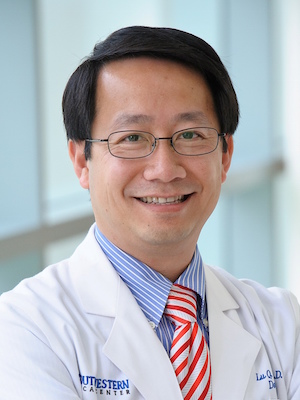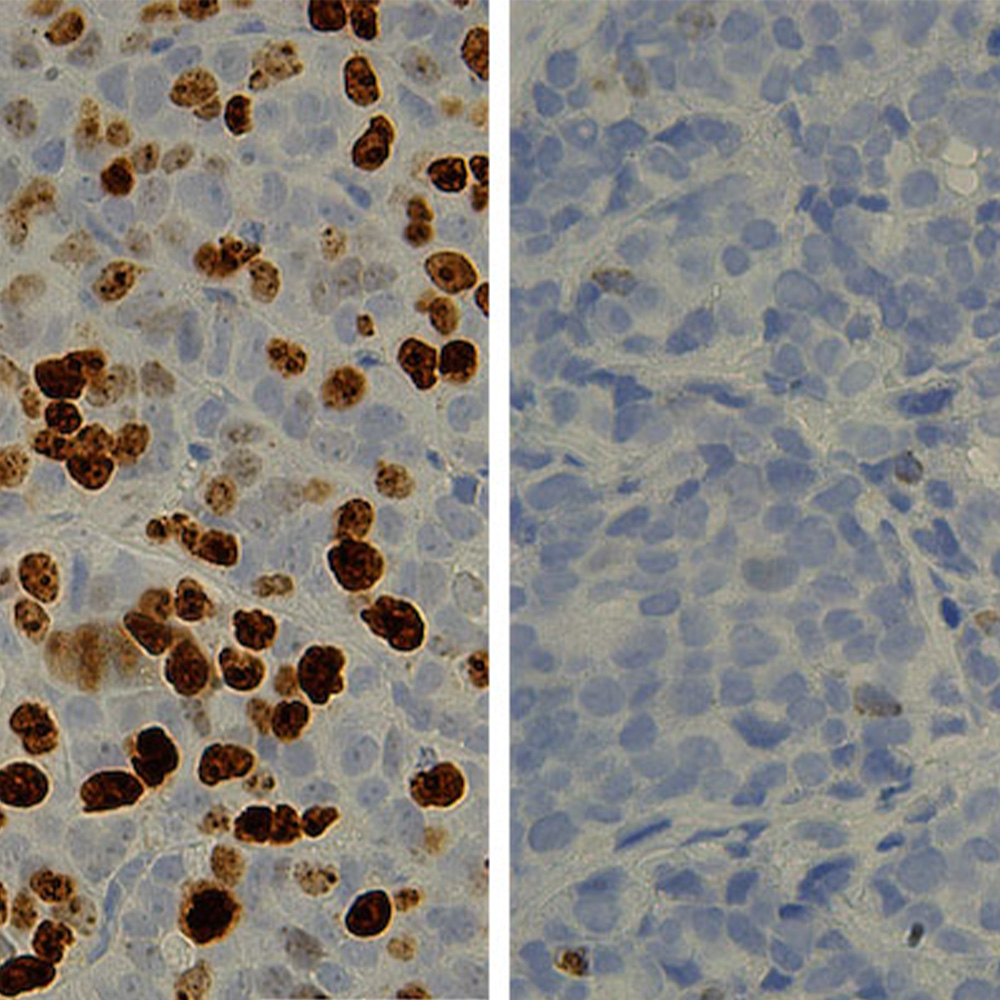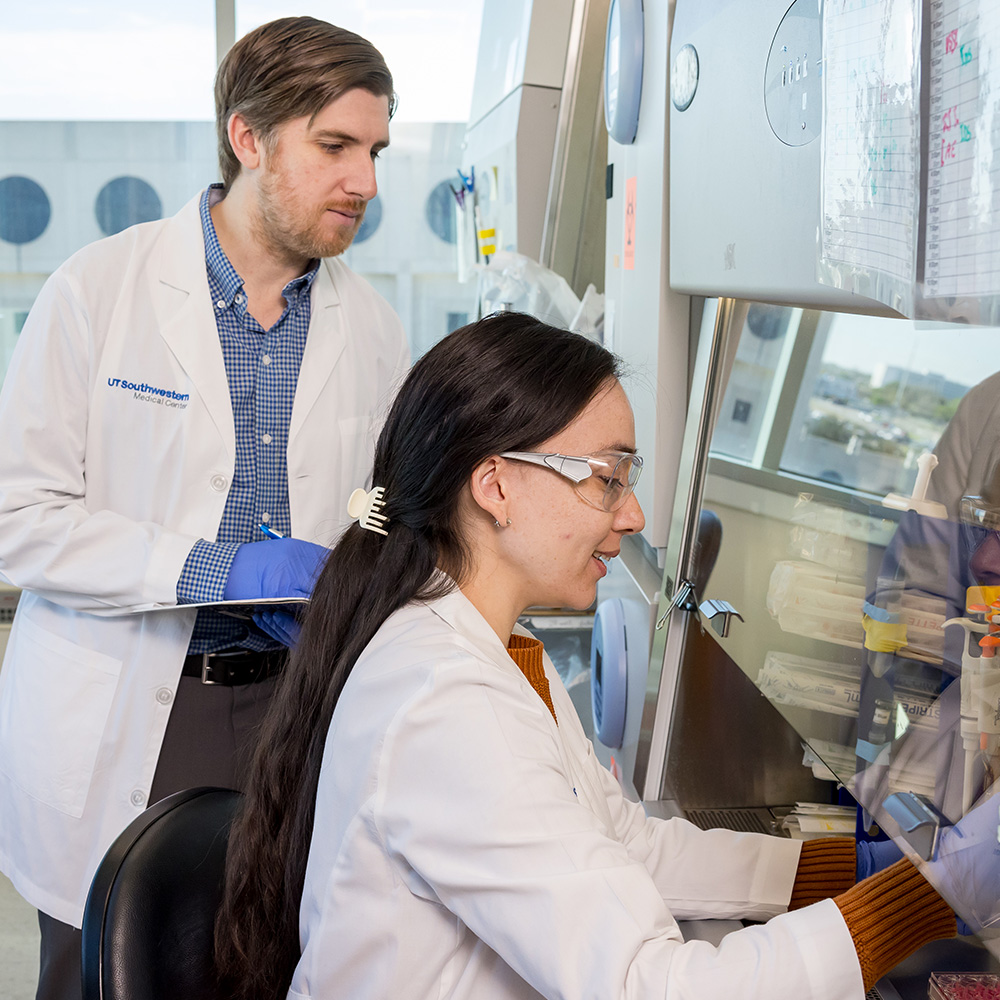Scientists find skin cells at the root of balding, gray hair
UT Southwestern Medical Center researchers have identified the cells that directly give rise to hair as well as the mechanism that causes hair to turn gray – findings that could one day help identify possible treatments for balding and hair graying.
“Although this project was started in an effort to understand how certain kinds of tumors form, we ended up learning why hair turns gray and discovering the identity of the cell that directly gives rise to hair,” said Dr. Lu Le, Associate Professor of Dermatology with the Harold C. Simmons Comprehensive Cancer Center at UT Southwestern. “With this knowledge, we hope in the future to create a topical compound or to safely deliver the necessary gene to hair follicles to correct these cosmetic problems.”

The researchers found that a protein called KROX20, more commonly associated with nerve development, in this case turns on in skin cells that become the hair shaft. These hair precursor, or progenitor, cells then produce a protein called stem cell factor (SCF) that the researchers showed is essential for hair pigmentation.
When they deleted the SCF gene in the hair progenitor cells in mouse models, the animal’s hair turned white. When they deleted the KROX20-producing cells, no hair grew and the mice became bald, according to the study.
The findings are published online in Genes & Development.
Dr. Le, who holds the Thomas L. Shields, M.D. Professorship in Dermatology, said he and his researchers serendipitously uncovered this explanation for balding and hair graying while studying a disorder called Neurofibromatosis Type 1, a rare genetic disease that causes tumors to grow on nerves.
Scientists already knew that stem cells contained in a bulge area of hair follicles are involved in making hair and that SCF is important for pigmented cells, said Dr. Le, a member of the Hamon Center for Regenerative Science and Medicine.
What they did not know in detail is what happens after those stem cells move down to the base, or bulb, of hair follicles and which cells in the hair follicles produce SCF – or that cells involved in hair shaft creation make the KROX20 protein, he said.
If cells with functioning KROX20 and SCF are present, they move up from the bulb, interact with pigment-producing melanocyte cells, and grow into pigmented hairs.
But without SCF, the hair in mouse models was gray, and then turned white with age, according to the study. Without KROX20-producing cells, no hair grew, the study said.
UT Southwestern researchers will now try to find out if the KROX20 in cells and the SCF gene stop working properly as people age, leading to the graying and hair thinning seen in older people – as well as in male pattern baldness, Dr. Le said.
The research also could provide answers about why we age in general as hair graying and hair loss are among the first signs of aging.
Other researchers include first author Dr. Chung-Ping Liao, Assistant Instructor; Dr. Sean Morrison, Professor and Director of the Children’s Medical Center Research Institute at UT Southwestern and of Pediatrics, and Howard Hughes Medical Institute Investigator, who holds the Kathryne and Gene Bishop Distinguished Chair in Pediatric Research at Children’s Research Institute at UT Southwestern and the Mary McDermott Cook Chair in Pediatric Genetics; and Reid Booker, a former UT Southwestern researcher.
The research was supported by the National Cancer Institute, Specialized Programs of Research Excellence (SPORE) grant, National Institutes of Health, the Dermatology Foundation, the Children’s Tumor Foundation, and the Burroughs Wellcome Fund.
This article was originally published on May 5, 2017.
####
About UT Southwestern Medical Center
UT Southwestern, one of the premier academic medical centers in the nation, integrates pioneering biomedical research with exceptional clinical care and education. The institution’s faculty has received six Nobel Prizes, and includes 22 members of the National Academy of Sciences, 18 members of the National Academy of Medicine, and 14 Howard Hughes Medical Institute Investigators. The faculty of more than 2,700 is responsible for groundbreaking medical advances and is committed to translating science-driven research quickly to new clinical treatments. UT Southwestern physicians provide care in about 80 specialties to more than 100,000 hospitalized patients, 600,000 emergency room cases, and oversee approximately 2.2 million outpatient visits a year.
###
Media Contact: Carol Marie Cropper
214-648-3404
Carol.Cropper@utsouthwestern.edu
To automatically receive news releases from UT Southwestern via email, subscribe at www.utsouthwestern.edu/receivenews




